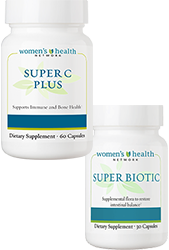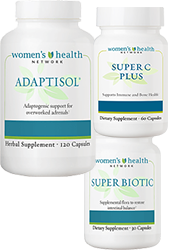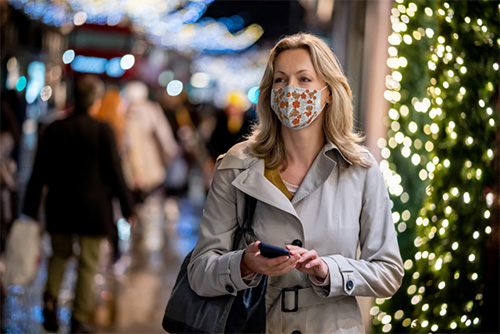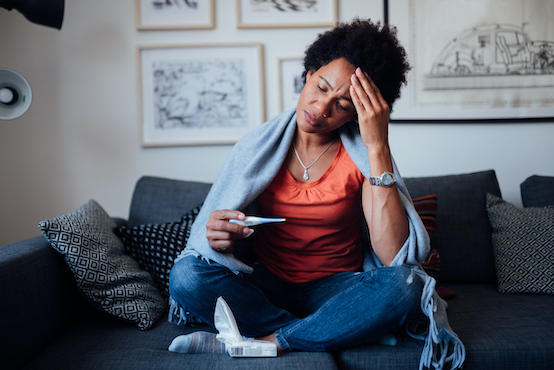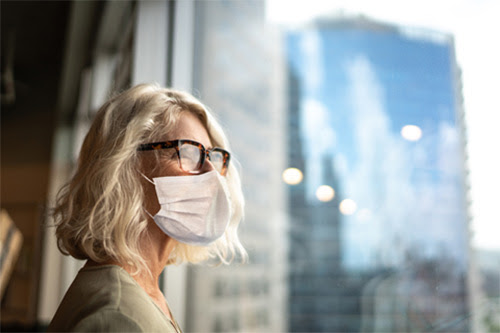We’re all concerned with how to survive the COVID-19 pandemic. For those lucky enough to be young and healthy, this might begin and end with more frequent hand washing and staying six feet apart.
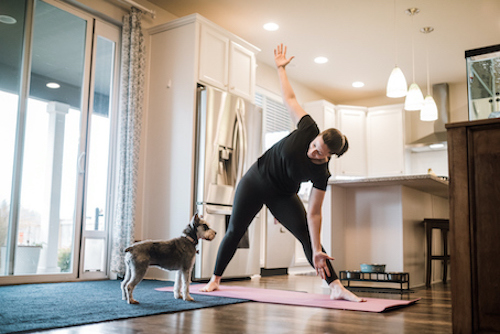
But if you’re one of the estimated two-thirds of Americans over the age of 60 with high blood pressure, it’s not so simple. According to the CDC, people with high blood pressure are more likely to get the virus, and they’re at increased risk for severe complications too. Being older just makes the risk from high blood pressure higher.
When we look to COVID-19 cases in Italy, the country the CDC says most closely matches how the pandemic is unfolding in the US, the risks of high blood pressure are starkly apparent. According to an Italian National Institute of Health study, almost all — 99% — of those who died from complications associated with COVID-19 had at least one underlying health condition. The most common was high blood pressure, which was co-morbid in a stunning 74% of those who died. Among other conditions, 34% had diabetes and 30% had heart disease.
Why is high blood pressure a special risk?
What’s the connection between high blood pressure and the risk of severe or fatal COVID-19? First, high blood pressure can transform cells of the immune system over time, altering and damaging their function. As people with high blood pressure grow older, age accelerates their lowered immunity.
Second, there is a controversial idea that it may not be high blood pressure itself that’s putting people at risk, but the prescription drugs they’re taking to treat the hypertension. As the theory goes, to infect cells, the COVID-19 virus must attach to ACE2 enzymes in the body; ACE inhibitors and angiotensin receptor blockers (ARBs), two common types of high pressure drugs, both increase levels of ACE2 enzymes. However, the jury is still out on this and the literature is not clear. There are other researchers who say that perhaps ACE2 inhibitors could offer protection against COVID-19 infection. I’ll keep you updated on this because I am very interested in finding out the answer.
Now, no matter which side of this debate is correct, I don’t want you to stop taking your high blood pressure medication over coronavirus fears. Always check with your own doctor about what’s right for you.
What I do want you to do is take a deep breath — actually, several of them, as I will explain in a minute — and understand that you have many ways to reduce your risks from COVID-19.
Yes, I want you to wash your hands and physically distance. But I also think it’s helpful to try some natural practices for bringing down your blood pressure. I hope your own doctor is advising you to do this anyway, but these days it seems like an extra good idea.
You can get started with these easy steps.
5 natural ways you can lower high blood pressure — at home
If you are overweight, try to lose 10 pounds. Being overweight is a major factor when it comes to high blood pressure. The type of fat that accumulates deep in the belly (known as visceral fat) is linked with high blood pressure, as well as high cholesterol, insulin sensitivity and more. The good news? Research has consistently shown that dropping just a few pounds can have a substantial impact on your blood pressure. If you are overweight, start with a goal of losing 10 pounds and see how your blood pressure responds.
Don’t worry about following some special diet to reach this goal, especially now when getting to the grocery store can be difficult. There are many simple things you can do. Stop eating 3 hours before you go to bed. That alone can help you lose weight. Try taking added sugar out of your diet, or remove grains or dairy. Start practicing mindfulness as you eat, which can help reduce “stress eating” — something most of us could use some help with right now!
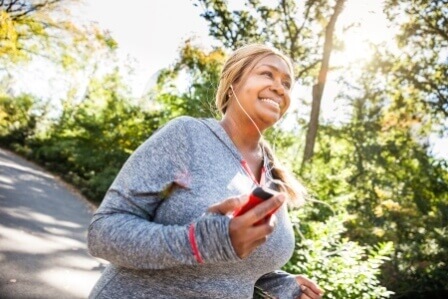
Get moving every day. When it comes to lowering blood pressure, exercise is proven as effective as medication, with higher intensity exercise the number one way to treat high blood pressure. It’s thought that exercising makes your artery walls more elastic, which could be why it is so effective when it comes to your blood pressure.
To reap these benefits, exercise for 30 minutes on most days of the week. It doesn’t matter what kind of exercise you choose — just do something that you enjoy so that you do it every day. A brisk 30-minute walk around your neighborhood is a good way to start, or stay home and take part in a virtual exercise class offered by a local gym, or try an online yoga class. Work your way up to 60-90 minutes of physical activity. My daily exercise is a 90-minute walk through the desert. Whenever I am stressed, I can feel the anxiety melting away as I start to walk. Exercise is powerful medicine.
Eat more potassium-rich foods. Most of us know that eating too much salt can contribute to hypertension, but most people aren’t aware of the benefits of potassium, which helps to counter sodium and has a positive effect on blood pressure. You’re probably don’t get enough of this mineral — most Americans don’t — so make it a priority to eat more potassium-rich foods, including:
- Avocados
- Coconut water
- Bananas, oranges, grapefruit, apricots, kiwi
- Dried fruits: prunes and prune juice, raisins, and dates
- Sweet potatoes
- Leafy greens
- Molasses
- Lima beans and lentils
One added tip about salt: When you do use salt, opt for Himalayan pink sea salt. It contains beneficial minerals, including iron, magnesium and potassium, and is slightly lower in sodium compared to standard table salt.
Try an Omega-3 supplement. An American Journal of Hypertension meta-analysis of over 70 studies confirmed that Omega-3 fatty acids EPA and DHA are beneficial for lowering high blood pressure. The reason why: High blood pressure is tied to dysfunction in the endothelium, the layer of cells that line the blood vessels. Scientists have observed that Omega-3s help to improve blood vessel elasticity and blood flow, which in turn lowers high blood pressure. Omega-3s also support healthy immune cell function.
When choosing an Omega-3 supplement, make sure it comes from a quality fish source using technology that ensures it’s free of heavy metals, and contains both EPA and DHA.
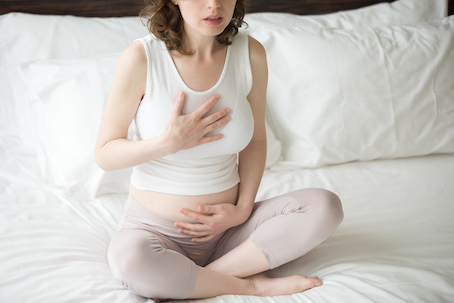
Practice deep breathing. Stress revs up and triggers our body’s “fight or flight response,” which includes raising blood pressure. This is why living in a state of chronic stress, as many of us are right now, has such terrible consequences for managing blood pressure.
But, there’s a solution — and it’s as easy as taking a few deep breaths for a few minutes a day. Slow abdominal breathing (also referred to as diaphragmatic breathing) stimulates the body’s Vagus nerve. Running from the neck to the abdomen, the Vagus nerve integrates our organ function, nervous systems and endocrine systems. When the Vagus nerve is activated, it acts as a brake on the “fight or flight” reflex, allowing blood vessels to relax and widen.
There are many other benefits of activating the Vagus nerve too — including enhanced immune and digestive function. It’s simple to get started with slow abdominal breathing:
1. Sit upright in a chair or lie on your back on a yoga mat or in bed, with your knees bent and your head supported with a low pillow.
2. Place one hand on your upper chest and the other on your belly, just below your rib cage.
3. Breathe in slowly through your nose, drawing the air in deeply towards your lower belly. The hand on your chest should remain still at first, while the one on your belly should rise.
4. Tighten your abdominal muscles and let them fall inward towards your spine as you exhale slowly through pursed lips. The hand on your belly should move down to its original position.
Practice this breathing pattern for at least 10 minutes a day. If you monitor your blood pressure at home, you can usually see a change in readings very soon after you start this practice. Step up your breathing game with these yoga techniques and yoga-inspired breathing practices to lower high blood pressure.
Even in these uncertain times, there is one thing that we can all still bank on: The ability to make choices — big and small — to protect our health.
Wouldn’t it be a silver lining to get through this pandemic with your blood pressure in a better place than when it all started? If you try some of these tips, you can. Let let me know how they work for you.
Stay home and stay well.
 |
COVID-19: More than the elderly are at risk. Maybe you are too. |
|
|
Shop for Immune Support |
|
Your Satisfaction Is 100% Guaranteed
https://www.heart.org/idc/groups/heart-public/@wcm/@sop/@smd/documents/downloadable/ucm_319587.pdf
https://www.cdc.gov/coronavirus/2019-ncov/hcp/clinical-guidance-management-patients.html
https://www.reuters.com/article/us-health-coronavirus-italy-tally/italys-coronavirus-deaths-surge-by-627-in-a-day-elderly-at-high-risk-idUSKBN2172VL
https://news.weill.cornell.edu/news/2016/11/cells-of-the-immune-system-implicated-in-high-blood-pressure-related-dementia
https://www.thelancet.com/pdfs/journals/lanres/PIIS2213-2600(20)30116-8.pdf
https://www.nhlbi.nih.gov/files/docs/public/heart/hbp_low.pdf
https://www.reuters.com/article/us-health-hypertension-fitness/to-lower-blood-pressure-exercise-may-be-as-good-as-medication-idUSKCN1OQ1GV
https://www.ncbi.nlm.nih.gov/pmc/articles/PMC4054797/







